12 Compost Bin Ideas: Perfect Solutions For Every Space & Budget
You don't need much to start making your own garden gold – discover easy, affordable bin options as well as solutions to take home composting to the next level.

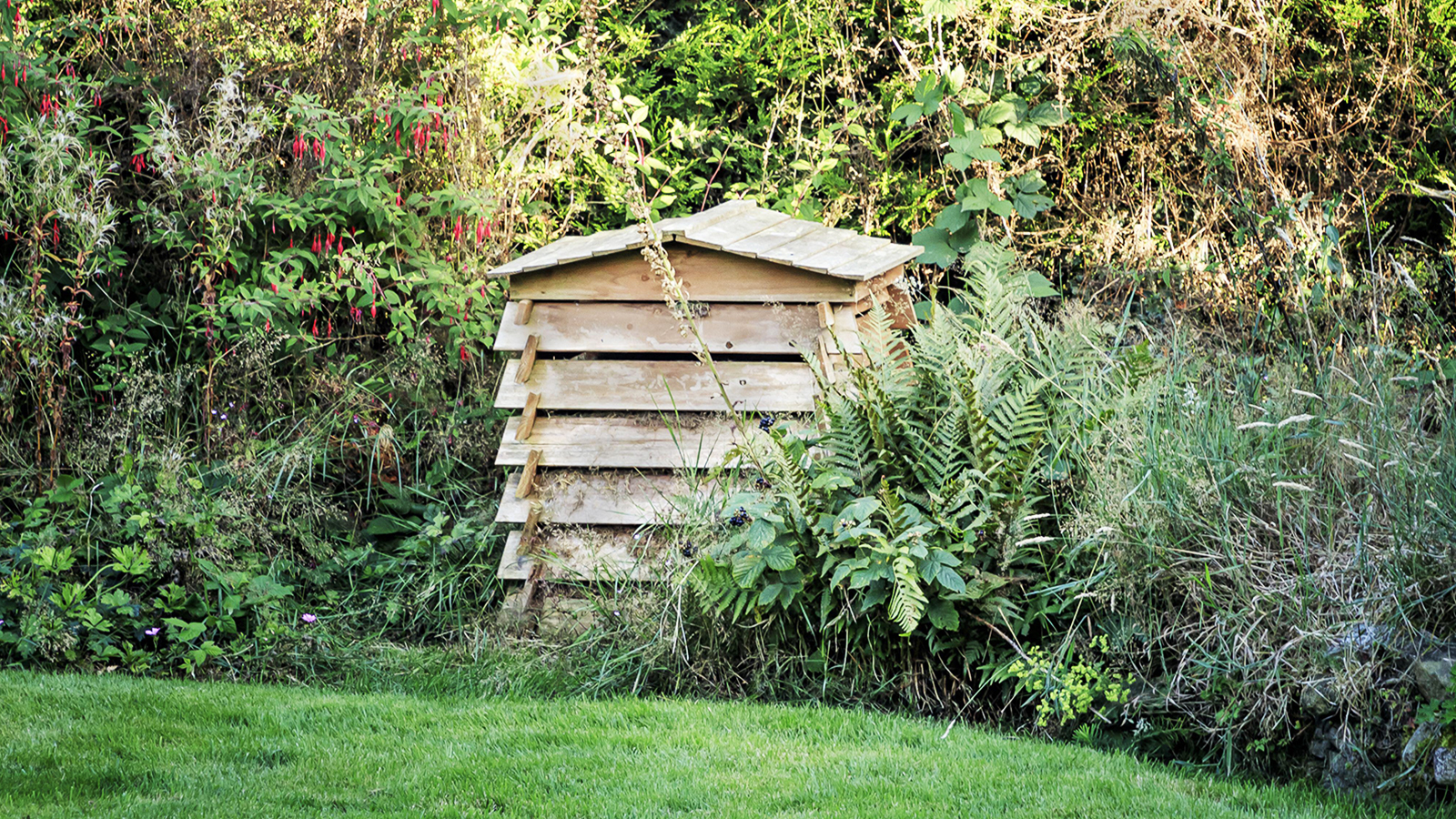
- 1. Compost Bin with Hatch
- 2. A DIY Wooden Slat Compost Bin
- 3. In-Ground Worm Composter
- 4. Compost Tumbler or Turner
- 5. Hot Compost Bin
- 6. Compost Pile in the Garden
- 7. Countertop Compost Bin
- 8. Bokashi Composting Bucket
- 9. 5-Gallon Bucket Compost
- 10. Trench in the Garden
- 11. Compost in a Bag
- 12. Compost Trash Can
Just because composting at home is easy doesn’t mean that everyone does it. Yes, organic compost is expensive at the garden center and free when you make it yourself, but if you don’t figure out a convenient way to create compost, you aren’t likely to do it. So, let’s look at different compost bin ideas and find one that works for you.
There are so many different compost systems that it can seem overwhelming to review them. But the good news is that you can find one that works in your space, including indoor options. You can buy a bin or make one yourself, and there are solutions for both small and large spaces.
If you need more information about how to start a compost bin, you’ve come to the right place. Whatever types of composting you want to try, there is an option that will suit your space and budget, including ideas for how to make a compost bin.
Compost Bin Ideas
Mother nature is the master composter, making soil more fertile by incorporating organic matter from decaying dead leaves and plants. You can bring extra compost into your own landscape by installing a compost system that works for your household.
There are many compost box ideas out there. The key is to pick one that works with your budget and space. You can install a compost pile outdoors or a compost bin indoors – or both. Each type of composting works slightly differently and impacts the speed of composting.
1. Compost Bin with Hatch
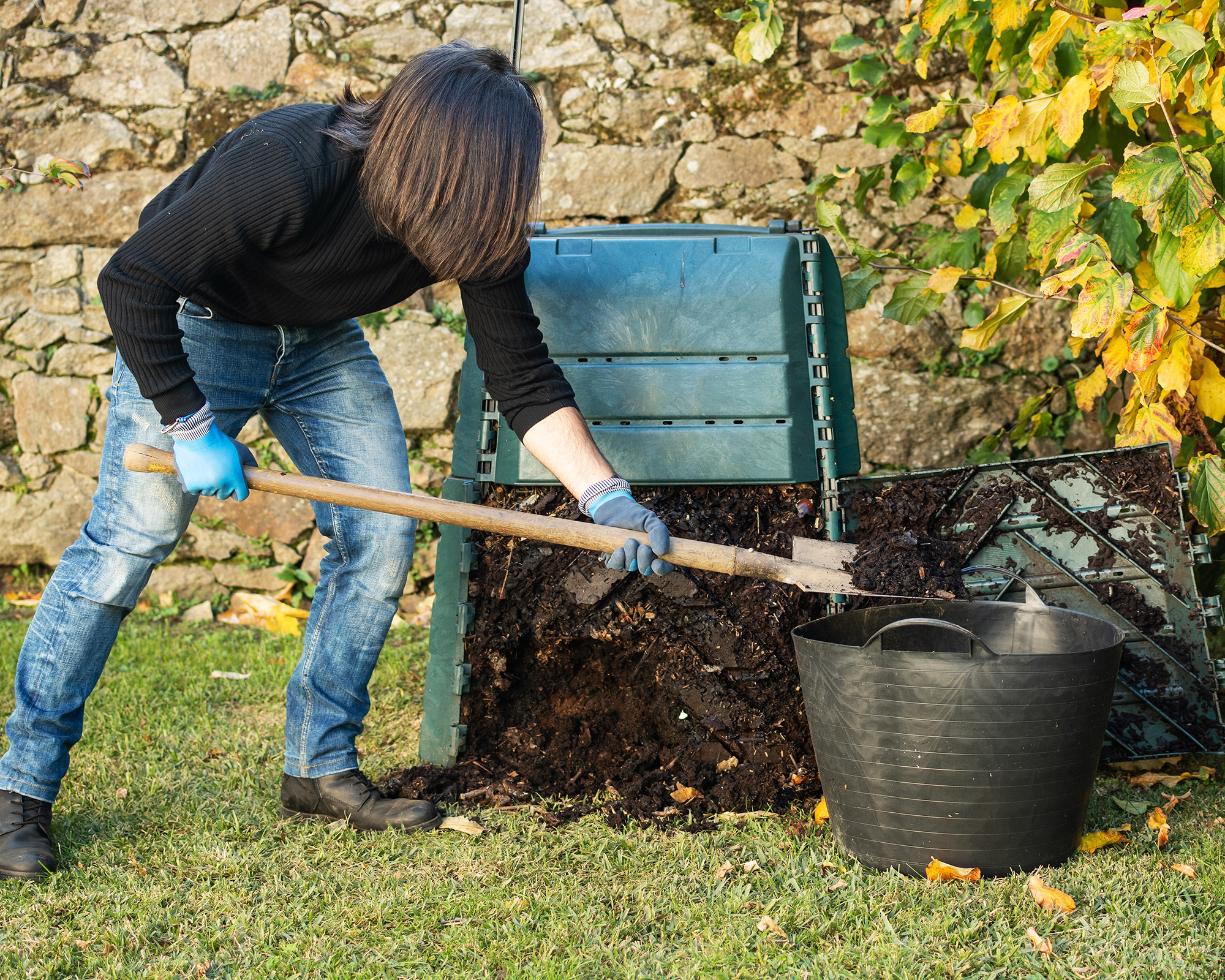
Making your own compost lets you turn waste into garden gold – a product that you can add to your soil to provide your plants with the nutrients and soil consistency they need to thrive. The simplest way to do this is by buying and using a standard plastic compost bin and learning what can be composted.
You place garden and kitchen detritus into the bin and add water, and over time it becomes fresh, home-made compost. Choose a bin with a hatch to allow easy access to the mature compost.
Sign up for the Gardening Know How newsletter today and receive a free copy of our e-book "How to Grow Delicious Tomatoes".
This may be the best of the compost bin ideas for someone just learning how to compost. You buy and bring home a bin, set it up in your backyard, and start putting kitchen waste (like vegetable peels and coffee grounds) and garden waste (like dried leaves) into the bin in layers, then let nature do the rest. You can find these pre-made bins in many sizes, shapes and colors, and they are ready to go almost out of the box.
This Outsunny compost bin from Amazon offers a generous 80-gallon capacity at an affordable price.
2. A DIY Wooden Slat Compost Bin
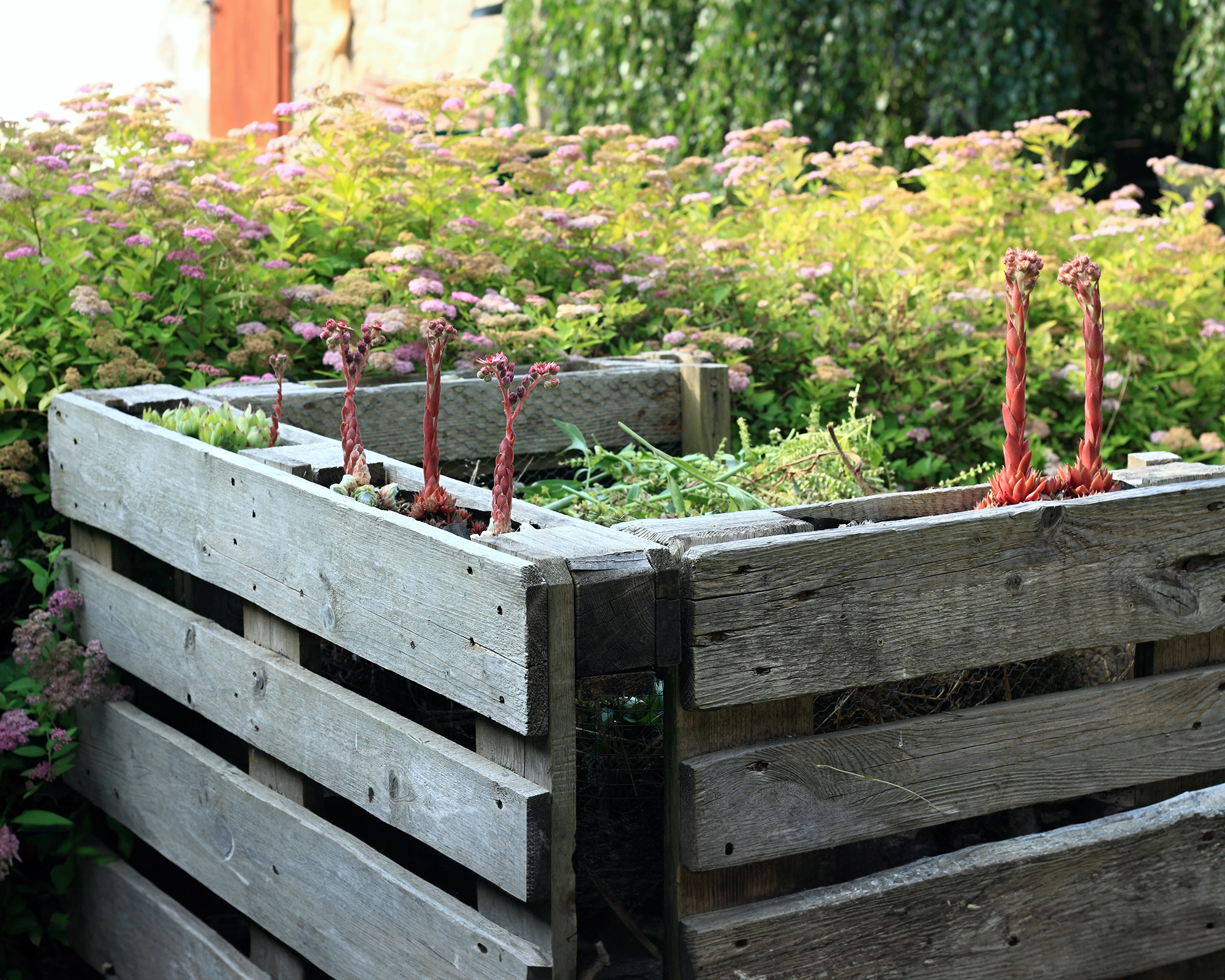
If you are willing to put in a little work, you can build a DIY compost bin from wood. There are kits you can buy to make a wooden slat compost bin, or you can just repurpose an old wooden fence. It is also possible to use wooden pallets – which will cut down on the work. The idea is to build a rectangular, four-sided structure made from slatted wooden planks or boards that are screwed or nailed together. One side is left open as a “door” to put in the waste material.
This is a good option for those with a large backyard and DIY skills. Generally, wooden slat compost bins are at least 5 to 7 feet (1.5 to 2m) tall and wide and 3 to 4 feet high (0.9 to 1.2m). Covering the top of the bin with plastic will result in faster decomposition.
If you like the idea but don't want to build one, then Walmart offers a good range of Greenes Fence compost bins, made from safe, untreated North American cedar.
3. In-Ground Worm Composter
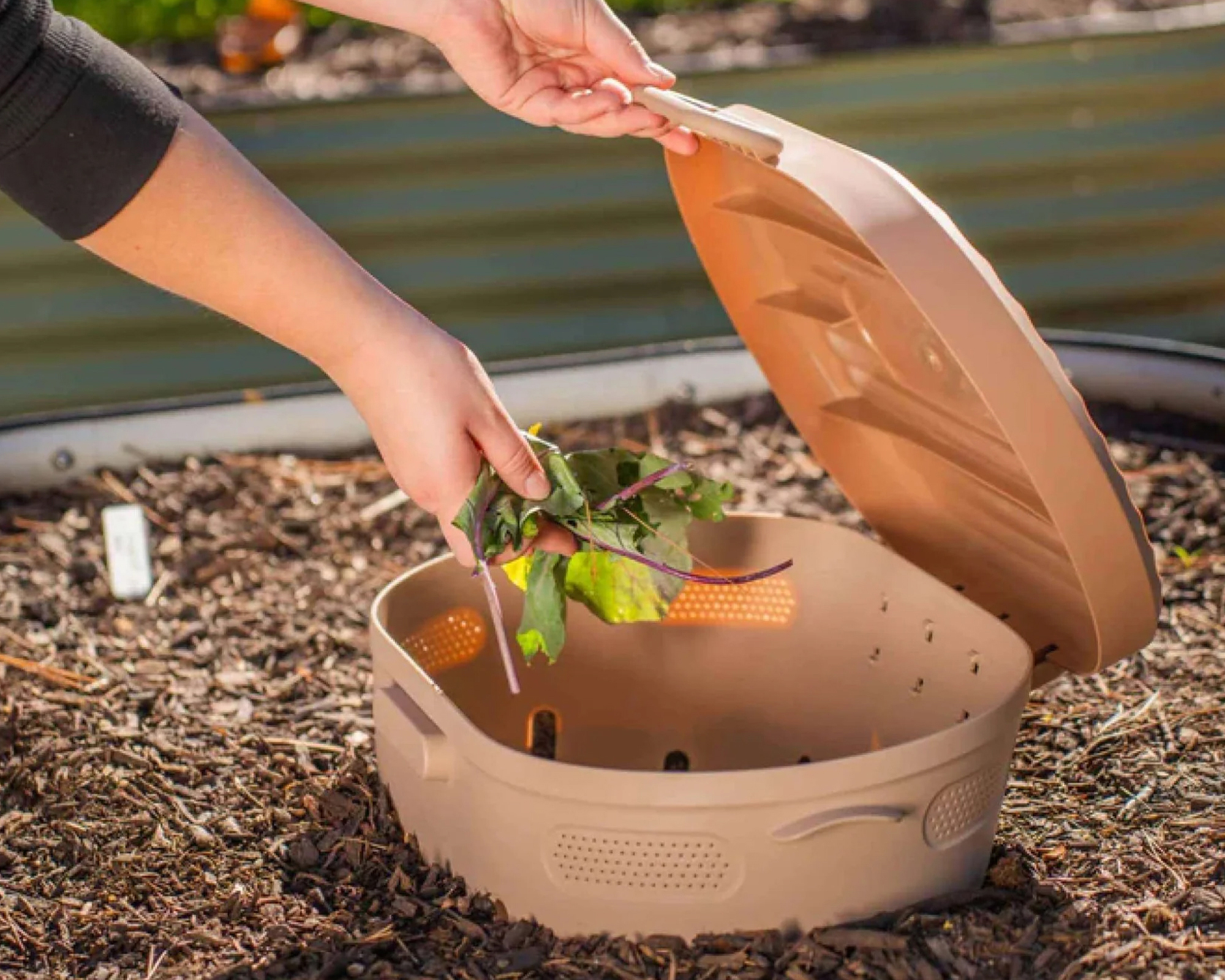
While standard composting relies on nature’s microorganisms to break down organic waste, you can also choose to put worms into the process. In vermicomposting, both worms and microbes help to decompose the material. The best way to use worms for composting is to buy an in-ground worm composter, such as this Vego design from Amazon. Essentially, it is a plastic bin with holes in it that you can place in the soil in a raised garden bed. You add organic waste and compost worms, then step back and let nature take its course. Worms really speed up the composting process.
This system works well and easily for those with raised garden beds. On the other hand, the amount of compost is limited, and it won’t work for those truly squeamish about worms. Generally, these boxes create between 5 and 10 gallons of compost.
4. Compost Tumbler or Turner
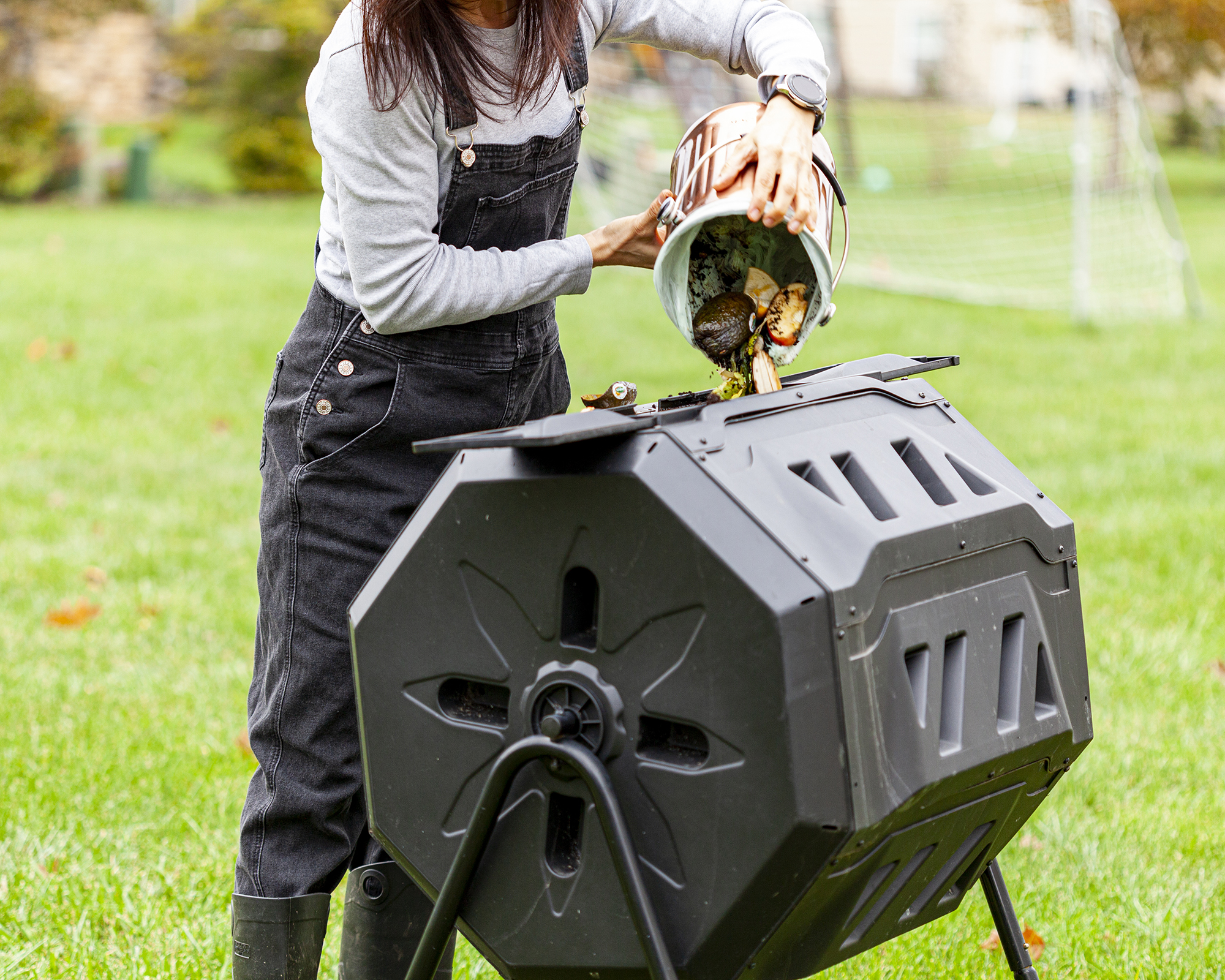
With a standard compost bin, the hardest work you’ll do is turning the compost regularly. If you create or buy a compost turning unit, turning becomes easy. To do a DIY version, you can mount a barrel on a frame, attaching a handle to allow turning. The barrel can be mounted horizontally or vertically on cinder blocks, using a metal pipe flange for the crank arm. Alternatively, you can buy a compost tumbler system ready-made. The Exaco 43 recycled plastic tumbler composter from Lowe's has two compartments to keep fresh organic waste and more mature compost separate.
This type of compost system makes the creation of compost as easy as can be. It is a simple way to blend the organic waste with the oxygen and water by simply turning the barrel.
5. Hot Compost Bin
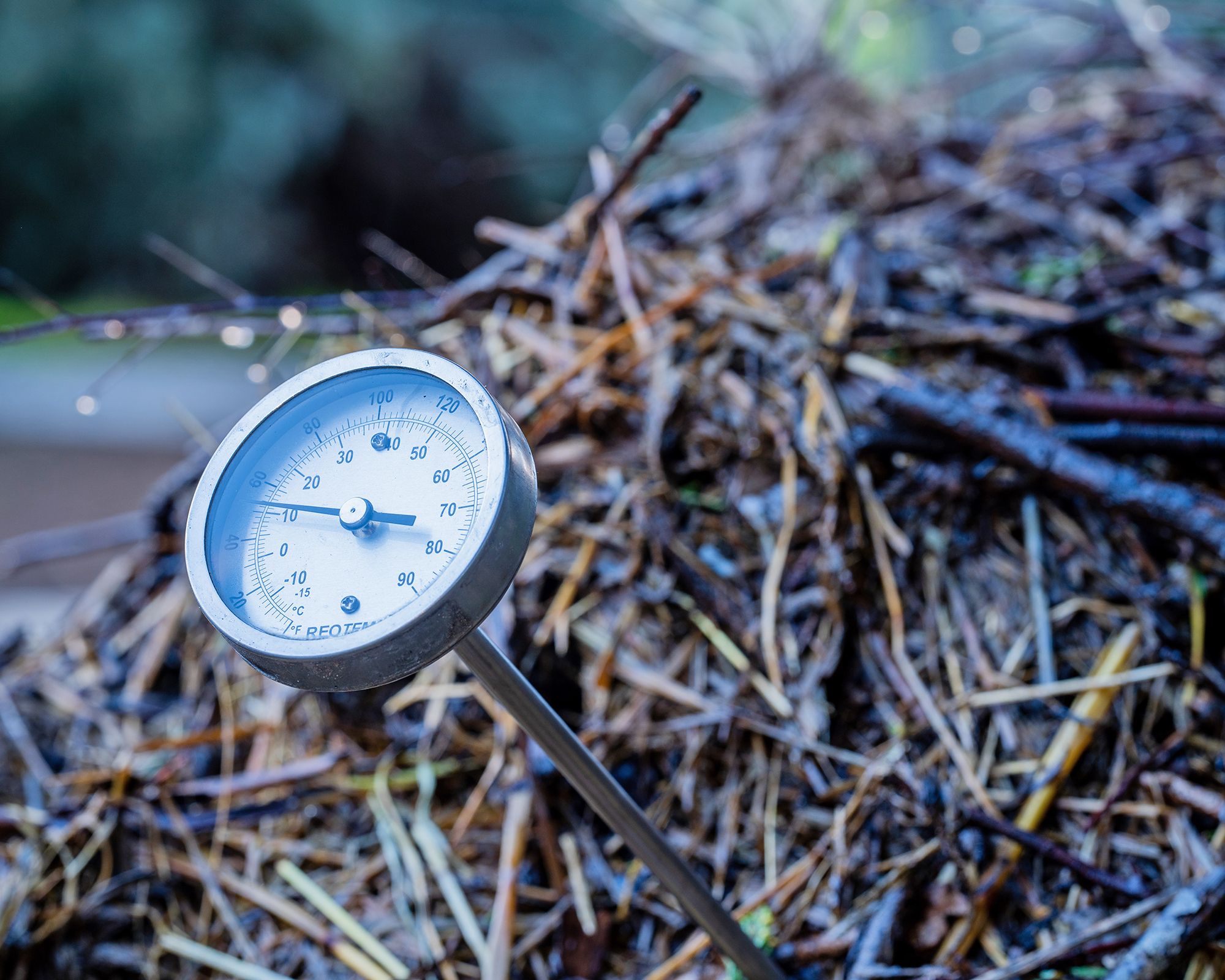
One of the fastest ways to get ready compost is to use a hot compost bin. While all compost is created by microorganisms breaking down organic matter, hot composting optimizes microbial activity. The idea is to keep the composting material hot by reducing the size of the materials composted, turning it more often, and keeping track of the temperature. This results in a more rapid breakdown of organic materials.
In fact, the main advantage of this system is to produce usable compost in a matter of weeks, rather than the many-months’ time frame in regular “cool” composting. The big disadvantage of hot composting is the effort it requires.
6. Compost Pile in the Garden
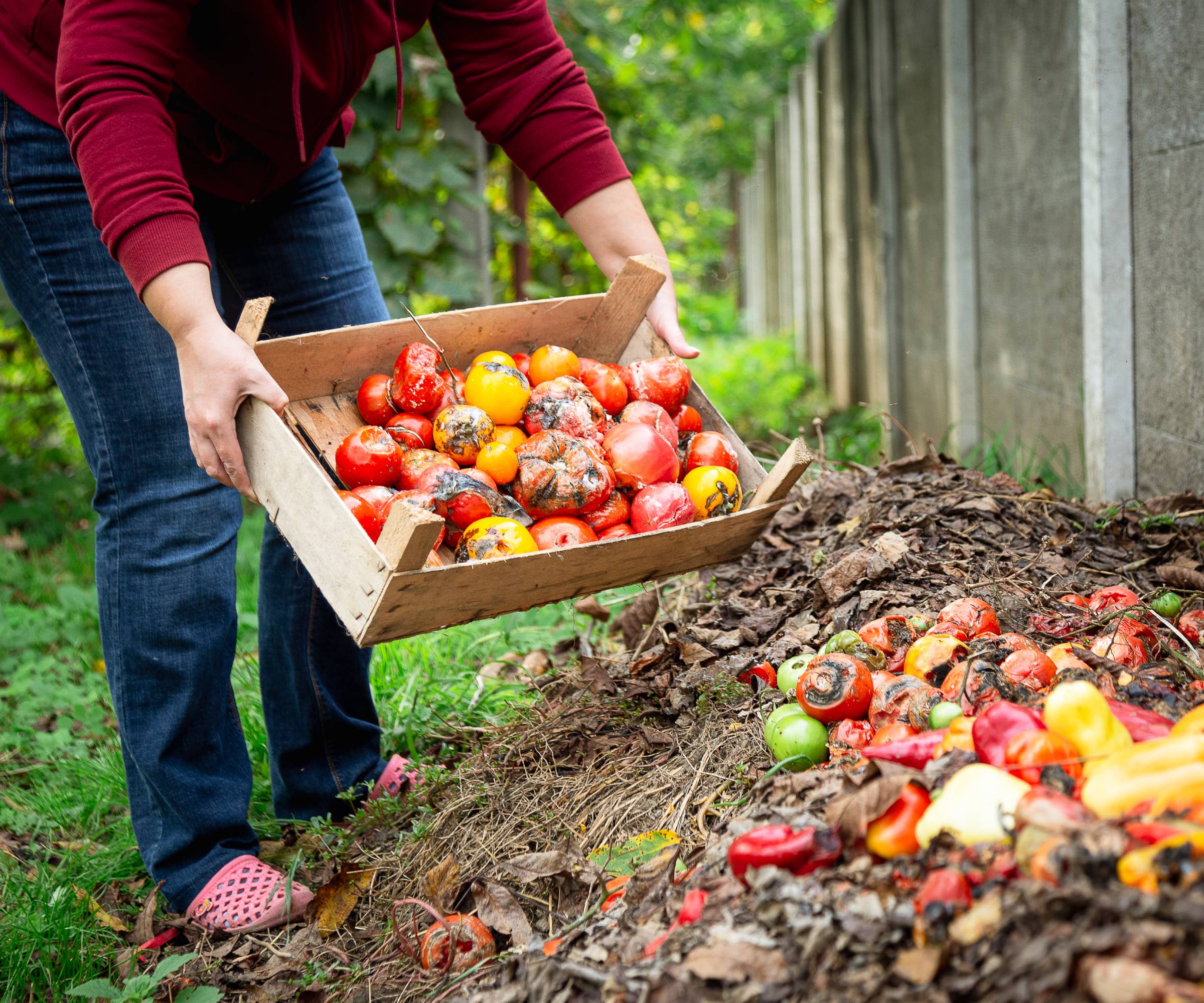
The very simplest way to compost is by creating a compost pile in the garden. There are unlimited compost pile ideas – since all you need to do is select a flat spot that gets some sun and start piling up compost greens and browns. Layer green matter (e.g. kitchen waste) and brown matter (e.g. dried leaves) like a compost lasagne.
Compost piles are somewhat unsightly, so these are only viable alternatives if you have a big backyard. On the other hand, they are a cheap (indeed free!) way to get started.
7. Countertop Compost Bin
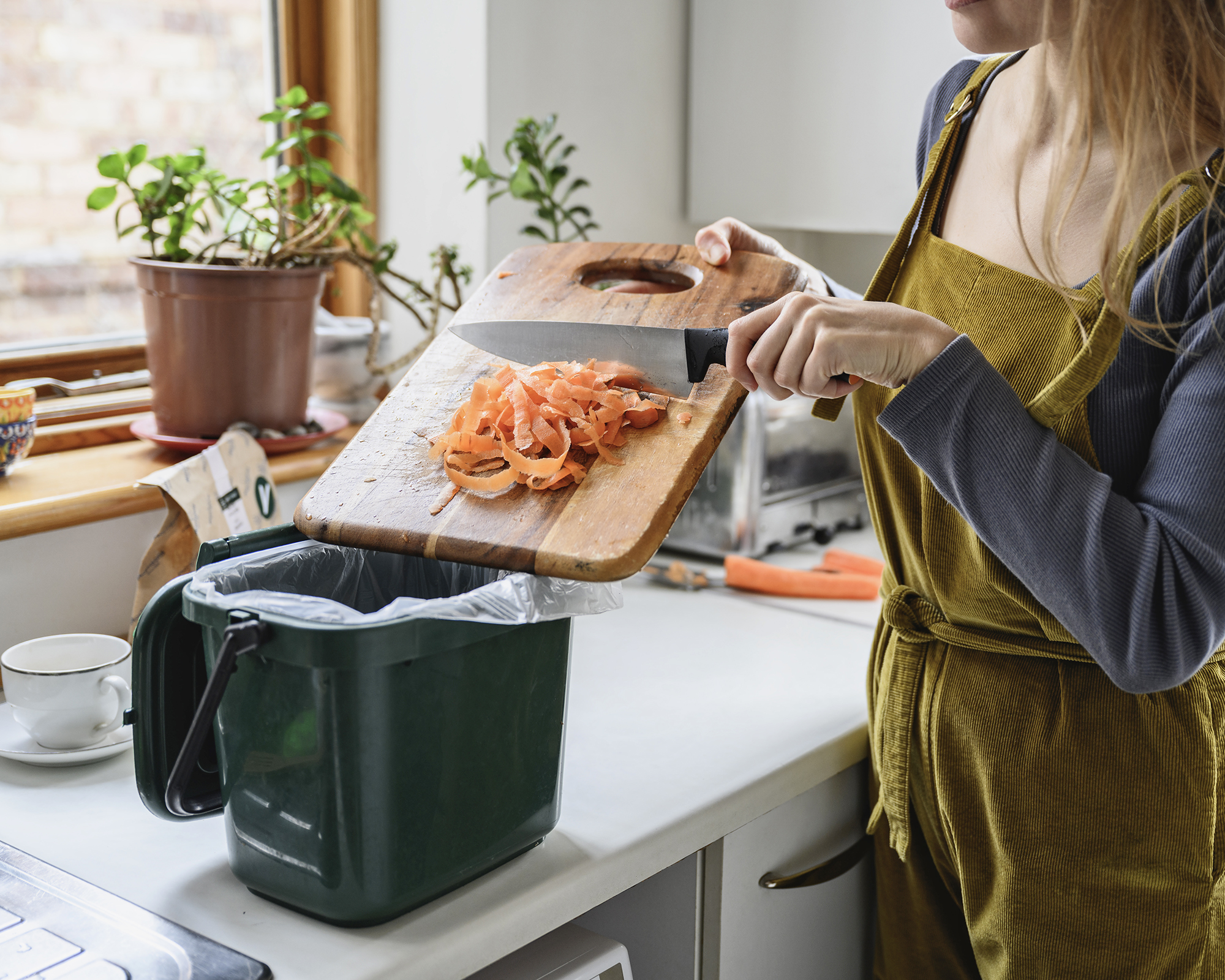
What about composting indoors, right in the kitchen? This is possible – on a small scale – with a countertop compost bin. Given the limited size of a kitchen countertop, the volume of compost detritus you can use is reduced. On the other hand, it makes it very easy to use kitchen scraps, since the bin is within reach. This Joseph Joseph intelligent waste compost bin from Amazon has a built-in odor filter and comes in two colors.
Once the countertop compost bin is full, you can add the material into a compost pile or an electric composter. These machines use heat and grind the food scraps into a crumbly material that, following a curing period, can be used as compost in the garden, reducing the time and effort required to make great compost. These may work for you if your space is extremely tight.
The Reencle Home Composter, available in the Gardening Know How Shop, nurtures microbial activity in the composting process, resulting in compost that is ready to plant with in as little as two weeks.
8. Bokashi Composting Bucket
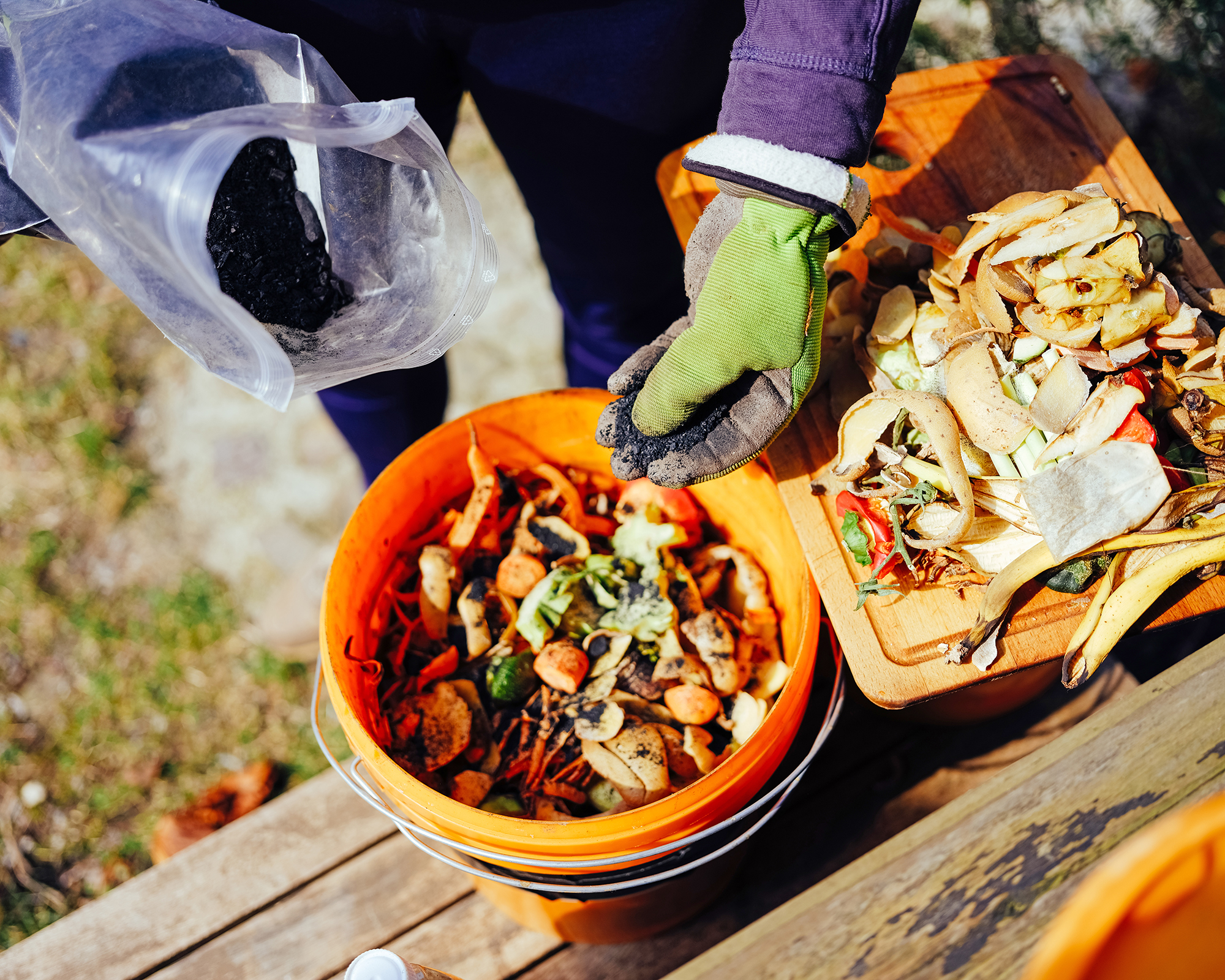
If you are tired of working the compost pile in the garden, then waiting months for usable compost, you may be interested in bokashi composting. This is a method of fermenting organic waste that creates nutrient-rich compost quickly. It involves using a bokashi bran containing of microorganisms that cause rapid decay of organic matter. The downside is the limited amount of compost you can make at any one time.
In bokashi composting, you put your kitchen and garden waste in an airtight container, then a layer of the bokashi mix – according to the instruction on the product. This is repeated until the container is filled up. Keep the container tightly closed to allow the fermenting process to take place.
The bokashi composting method is quick and lets you compost items that you usually cannot put in a traditional compost heap, like meat scraps. The compost product can be buried in the garden in as little as two weeks, and the fermenting process continues in the soil.
This Premium Bokashi Composting Starter Kit from Amazon includes two bokashi bins, 4.4 lbs of bran, and full instructions to get you started.
9. 5-Gallon Bucket Compost
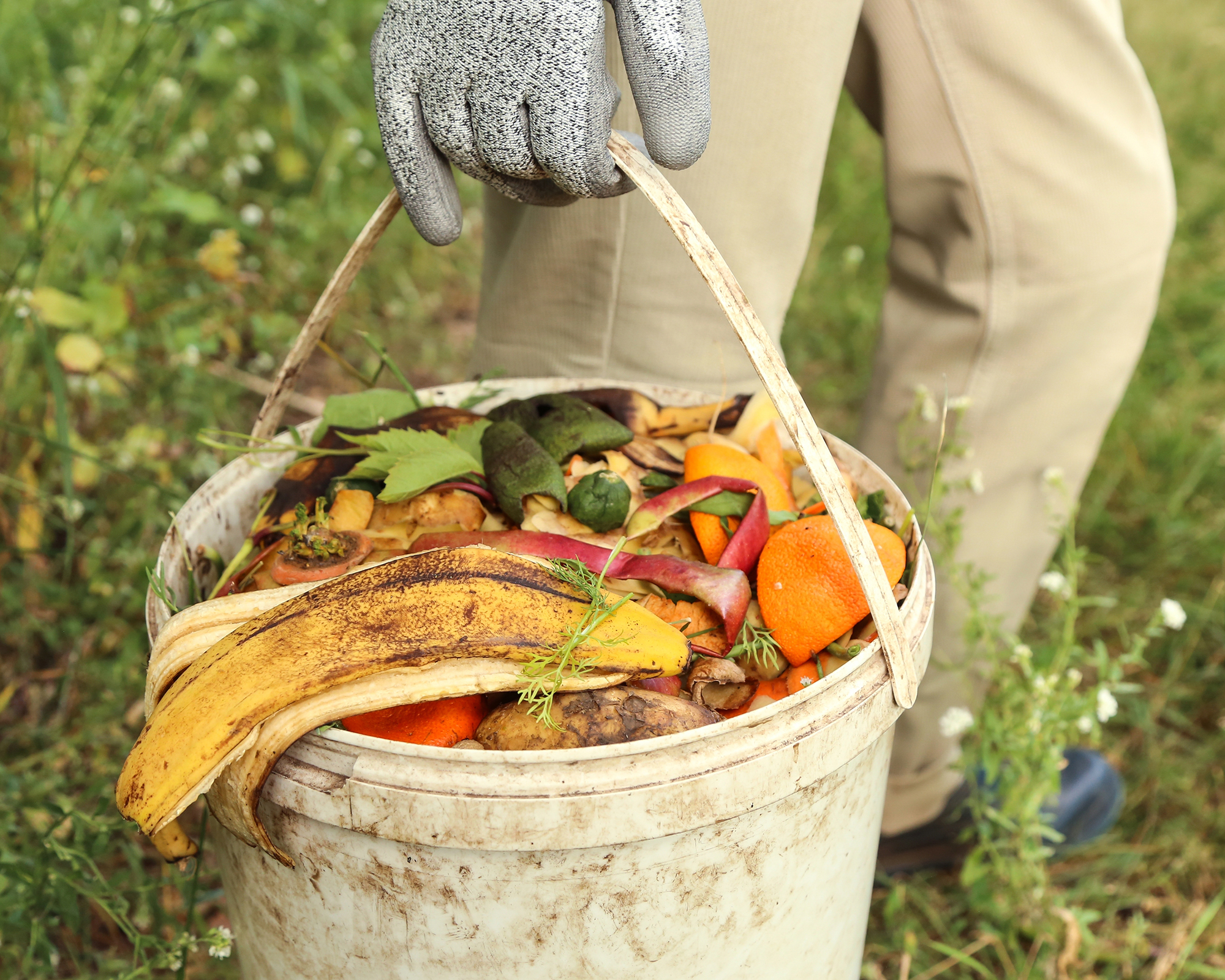
If you’ve got no space or low space in your yard, you can compost with a 5-gallon bucket system. This bucket with a lid from Amazon is ideal. It is possible to make compost in a small bucket if you use the vermicomposting or bokashi composting system.
For vermicomposting, you’ll need to drill lots of drain holes in a plastic 5-gallon bucket with a tight lid. The compost material and the worms go inside. Turn or shake the bucket every few days to add oxygen.
For bokashi composting, you’ll need to drill holes in the bottom of a 5-gallon container. Nest this inside an airtight container with a tight-fitting lid. Place a scoop of the bokashi bran mix on the mix every time you add kitchen scraps. After a week or so, the material is ready to be placed in garden soil to finish the composting process.
10. Trench in the Garden
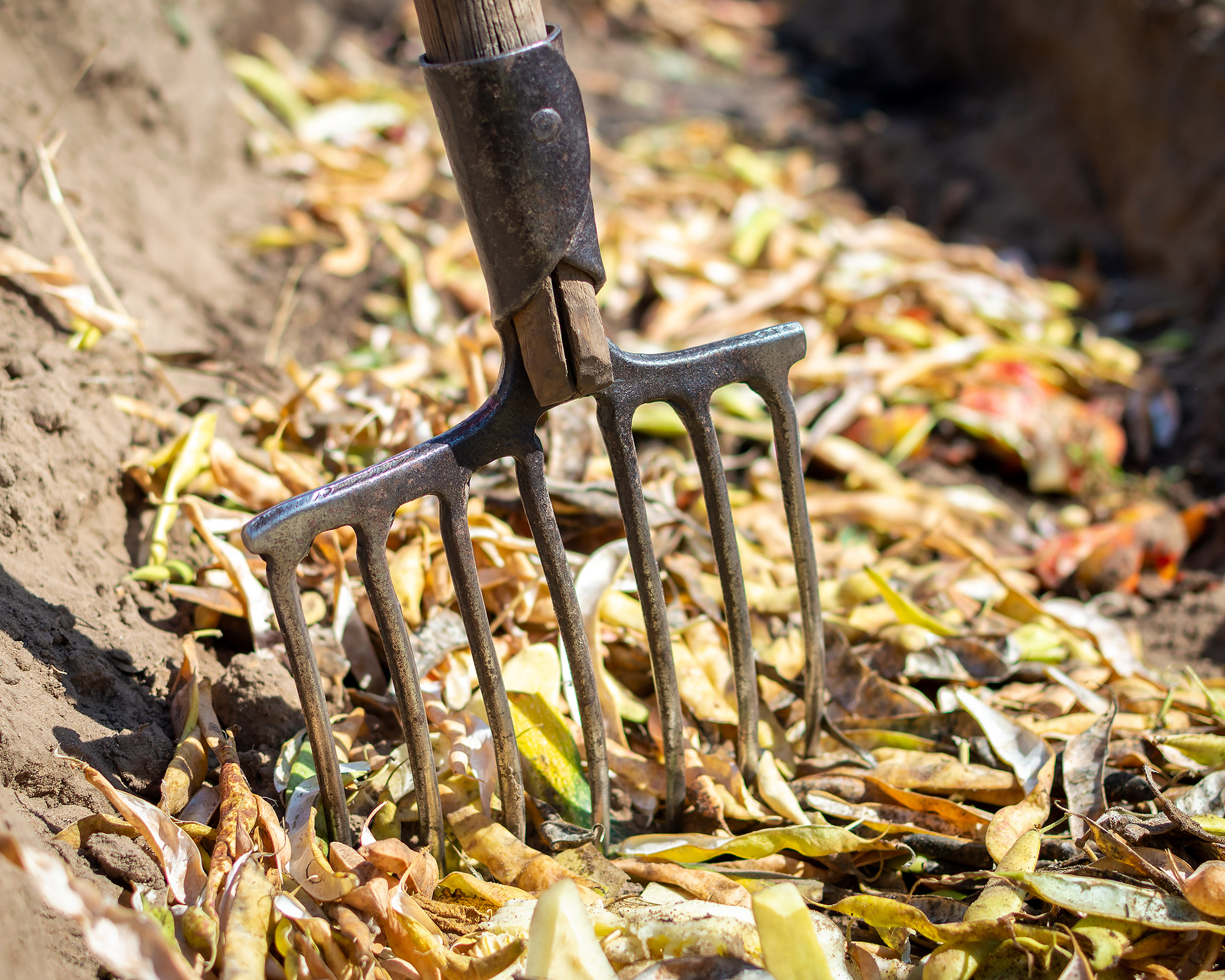
When you compost in a bin or a pile, you need to move the finished compost into the garden beds when it is ready. You can avoid this step by composting in a trench in the garden. Subterranean composting makes compost underground in a trench or a hole at least 18 inches (46cm) deep. You add organic materials, soak them with water, then backfill the trench with the removed soil. Do this in the fall, and the bed will be all ready for spring planting.
11. Compost in a Bag

If you want to compost in a super-small space and on the cheap, you can make a compost bin with a plastic bag. While you can buy official “compost bags”, like these Ctosree bags from Amazon, garbage bags work well too. Just put organic material in a plastic bag, water it down, tie it closed, then put that bag in a second bag. Place it in a sunny spot and shake it every few weeks. Compost will be ready in a matter of months.
12. Compost Trash Can
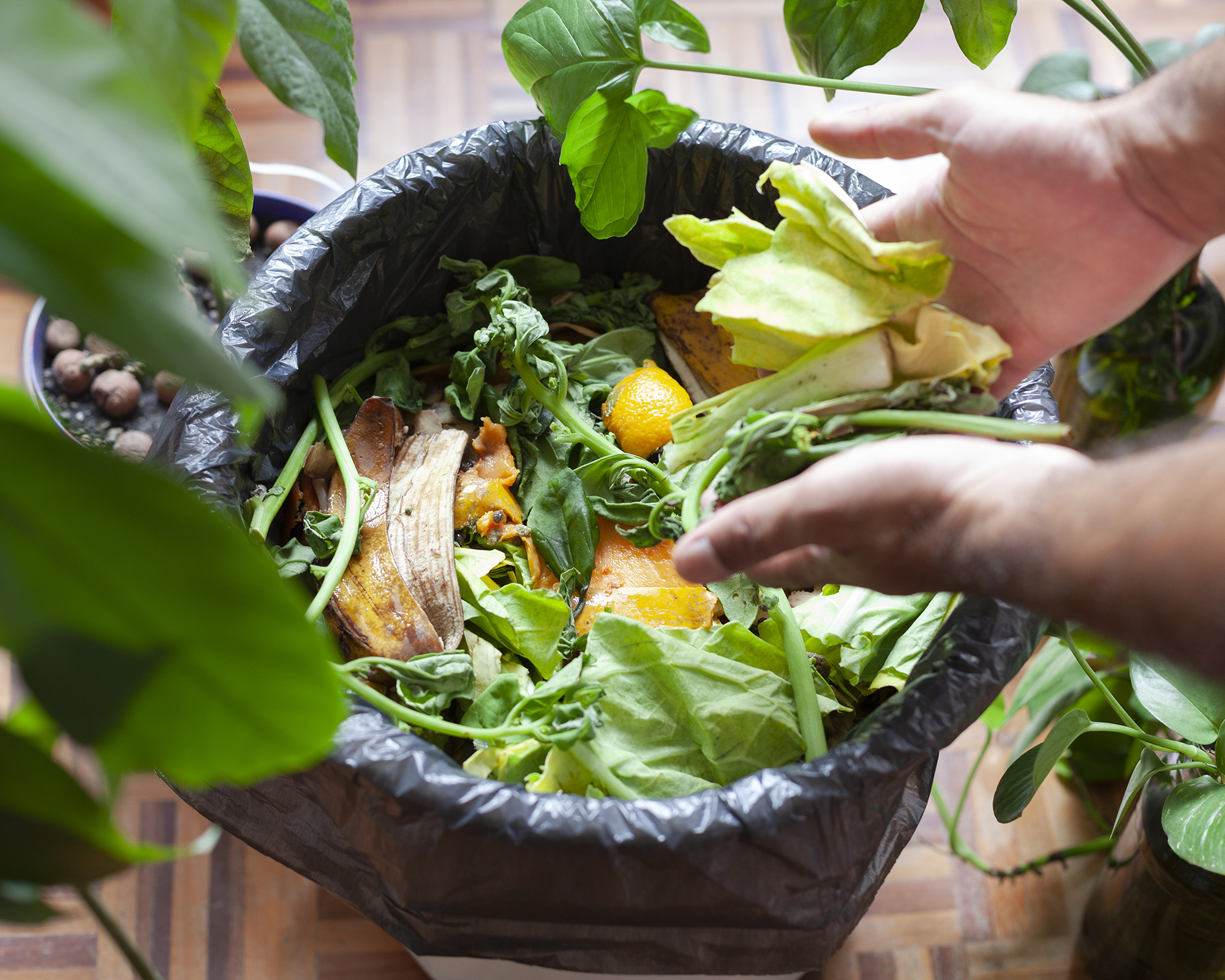
Here’s a final, simple idea to build a compost bin from a trash can. Get a plastic or metal trash can with a locking lid – this 32-gallon heavy-duty plastic garbage can with a click-lock lid from Amazon is ideal. Saw or drill holes all around the garbage can, including the bottom and the lid. Place it in the backyard and put organic material and water in the can. Lock the top to prevent rodents.

Teo Spengler is a master gardener and a docent at the San Francisco Botanical Garden, where she hosts public tours. She has studied horticulture and written about nature, trees, plants, and gardening for more than two decades, following a career as an attorney and legal writer. Her extended family includes some 30 houseplants and hundreds of outdoor plants, including 250 trees, which are her main passion. Spengler currently splits her life between San Francisco and the French Basque Country, though she was raised in Alaska, giving her experience of gardening in a range of climates.